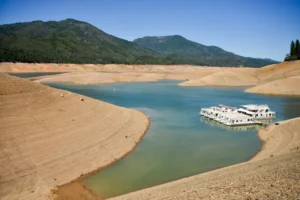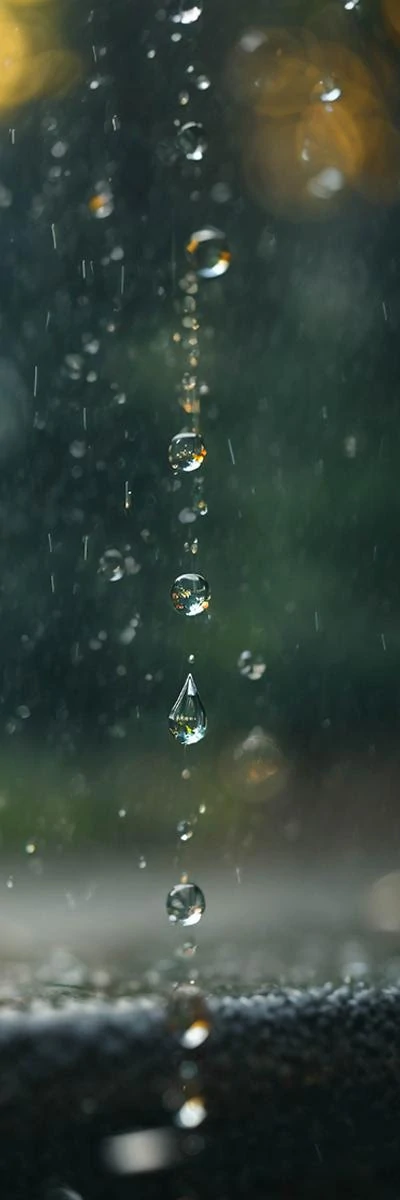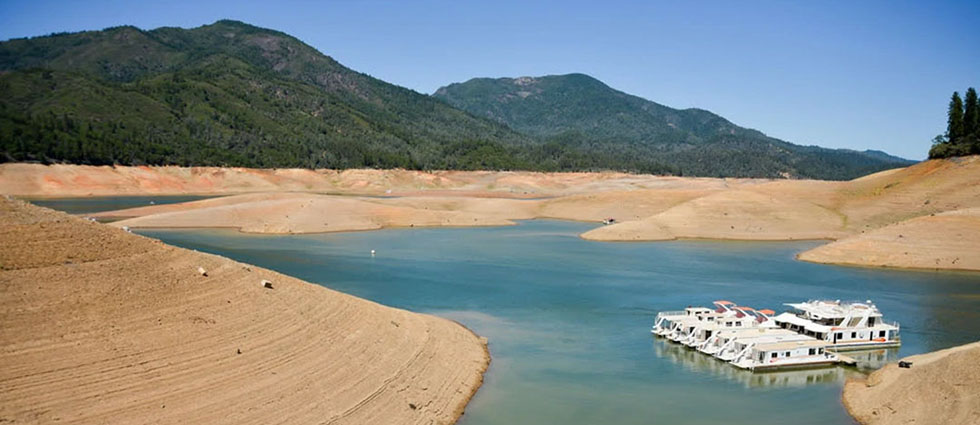
Behind a Complex Problem
Although countless articles and papers have been published over many years, many people still ask, “Why does California always seem to be out of water?” The answer isn’t as technical and complex as many make it out to be.

The Rain Water Balance Sheet

On average, California receives approximately 200 million acre-feet of water annually from rain and snow. One acre-foot equals 324,000 gallons, meaning California gets roughly 65 trillion gallons of water in an average year. That’s an enormous amount of water, so where does it all go?
Recent estimates show this distribution:
- 30% runs off to the ocean (60 million acre-feet)
- 40% is lost to evapotranspiration (80 million acre-feet to plants and evaporation)
- 20% seeps into groundwater (40 million acre-feet)
- 10% is captured in surface storage (20 million acre-feet in reservoirs and lakes, excluding water released for environmental purposes)
The Groundwater Deficit
California pumps approximately 40 million acre-feet of water from underground aquifers every year. In theory, this should balance with what naturally replenishes back into the ground, but the reality is more complicated.
Regions like the Central Valley receive minimal rainfall yet pump about 2 million acre-feet more per year than what seeps back in. After two decades of this deficit, their underground aquifers are depleting, causing land subsidence of up to 24 inches in some areas.
The Salinas Valley, which produces up to 70% of the iceberg and romaine lettuces consumed in the US, faces a deficit of 1 million acre-feet annually and has for over forty-five years. As freshwater depletes, saltwater from the ocean infiltrates these aquifers, rendering them permanently unusable.
In Northern California, its estimated that up to 10% of annual rainfall is released from storage reservoirs into the ocean each year for two significant but underreported purposes. First, these releases aim to attract fish species that have been absent from local rivers for decades. Second, and perhaps more pressing, numerous small communities upstream from the Northern California Bay Area operate under grandfather clauses that permit direct discharge of minimally treated wastewater into tributaries feeding the bay. Without this constant flow of fresh water being released, accumulated wastewater would eventually concentrate in the San Francisco Bay, potentially devastating local fish and wildlife populations, not to mention odors for residents. Despite the environmental and public health significance of these water management practices, local media rarely covers these issues anymore, leaving many citizens unaware of these important aspects of regional water policy.
Infrastructure Hasn’t Kept Pace
California hasn’t built a new reservoir since 1982, yet its population has more than doubled since then. Growing communities increasingly rely on groundwater, progressively lowering water tables and requiring larger pumps to extract water from depths of 800-1,200 feet. Twenty-five years ago, that same depth was 400 feet. This process demands significant electricity, considering water weighs 8 pounds per gallon and pumps often operate at 1,500 gallons per minute or more.
Urban expansion exacerbates the problem. More asphalt and concrete mean less surface area for rainwater to percolate back into the ground, increasing runoff to the ocean and further reducing aquifer recharge.
Solutions Exist but Require Action
The solutions aren’t particularly complex either. In 2015, voters approved a $9 billion ballot initiative for new water storage projects. However, ten years later not a single dollar of that ballot initiative has been spent. Conservation is important but insufficient when extraction far exceeds natural recharge.
The state also passed the Sustainable Groundwater Management Act (SGMA) requiring all water districts in the state to balance extraction with recharge. Originally set for 2025 implementation, this deadline has been pushed to 2030 and now 2035. However, simply mandating compliance without addressing implementation challenges of rural communities and costs is inadequate at best.
A Call to Action
California’s proposed $322 billion budget for fiscal 2025 includes a modest surplus. Surely, state senators could allocate a few billion dollars to initiate water storage projects voters approved a decade ago. We cannot allow another year of average rainfall to justify delaying these critical infrastructure investments which take years from ground breaking to completion.
The consequences of continuous inaction are severe: thousands of lost jobs, threatened communities, and irreversible damage to aquifers. Industries like agriculture cannot simply relocate to other states. Other states simply cannot produce what California produce will lose from lack of water.
The most effective way to participate is to contact your state senator and demand action on new water storage. You can also ask local newspapers why they aren’t covering this slowly unfolding disaster more prominently. Since California provides up to 70% of the US produce consumed, everyone will be affected at some point.


